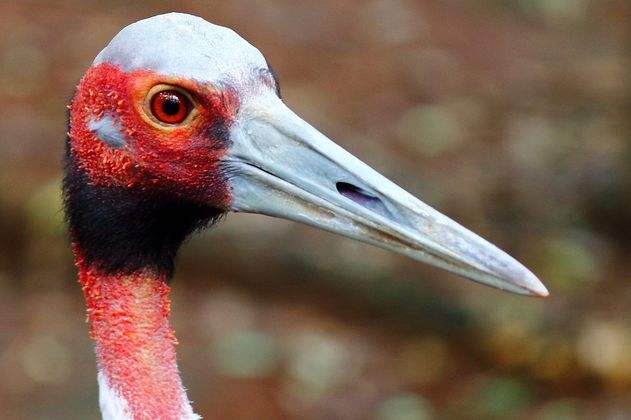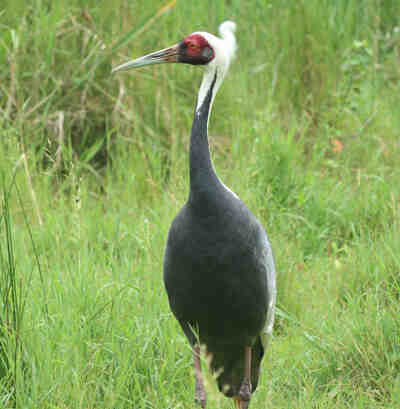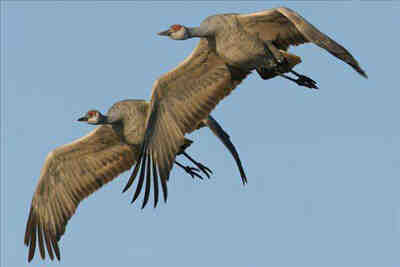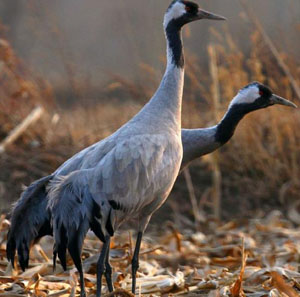
Sarus Crane is a large wading bird with three subspecies.Sarus Crane often moves alone or in pairs or family groups. In autumn and winter, it sometimes gathers in large groups of dozens or even hundreds of individuals. It is timid and alert. They mainly feed on fish, frogs, shrimps, lizards, grains...

White-naped Crane is a large wading bird with no subspecies.White-naped Crane mainly feeds on plant seeds, grass roots, young leaves, young shoots, grains, fish, frogs, lizards, tadpoles, shrimps, mollusks and insects. When feeding, they mainly use their beaks to peck, or use their beaks to first op...

Sandhill Crane is a large wading bird with the largest number of cranes in the world. It is divided into 6 subspecies with a total of more than 800,000 individuals. However, there are about 120 individuals in the Mississippi species and less than 100 individuals in the Cuban subspecies. Both are end...

The Siberian Crane is a large wading bird. Although it is divided into three populations, namely the eastern, central and western populations, it is a monotypic species with no subspecies differentiation. Known as the "living fossil" of birds, there are less than 4,000 of them in the world...

Grey cranes are large wading birds with obvious identification characteristics in the wild. They have very long necks and legs, and their feathers are mostly gray. The bare skin on the top of the head is bright red, and there are sparse black hair-like short feathers. There is a gray-white vertical...

The white-headed crane is a large wading bird with a long neck, beak, and legs. It is gentle, alert, and timid. It has a white gray coat and a snow-white neck. It migrates in spring from late March to late April and arrives at its breeding grounds in late April and early May. It migrates in autumn f...

Black-necked cranes are large flying wading birds. Except for the breeding season, they often move in pairs, individuals or family groups. In other seasons, they move in groups, especially in winter in wintering grounds, often forming large groups of dozens of individuals. During the wintering, they...